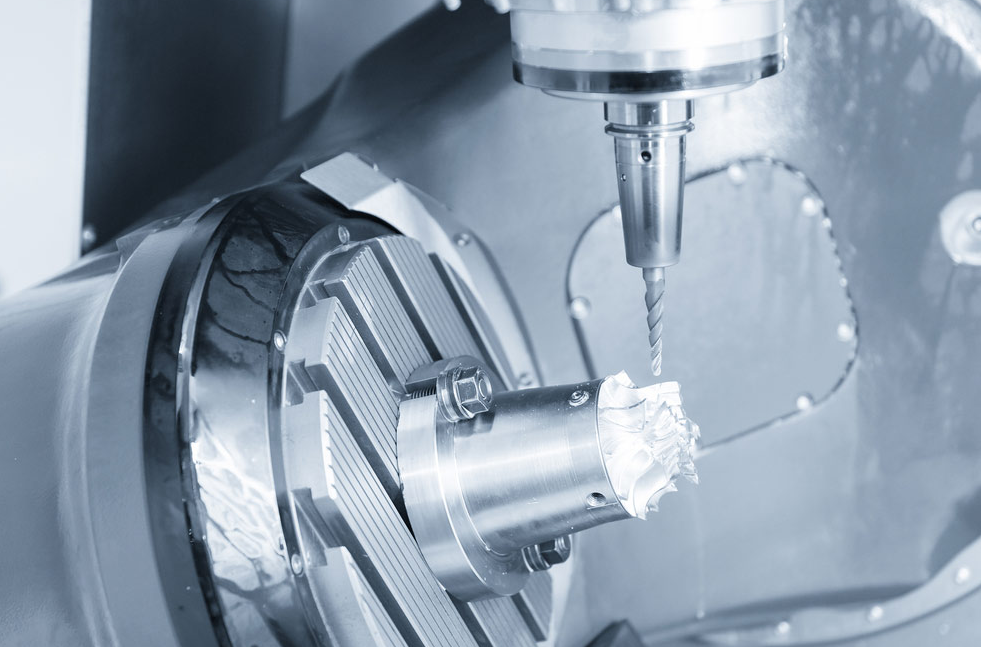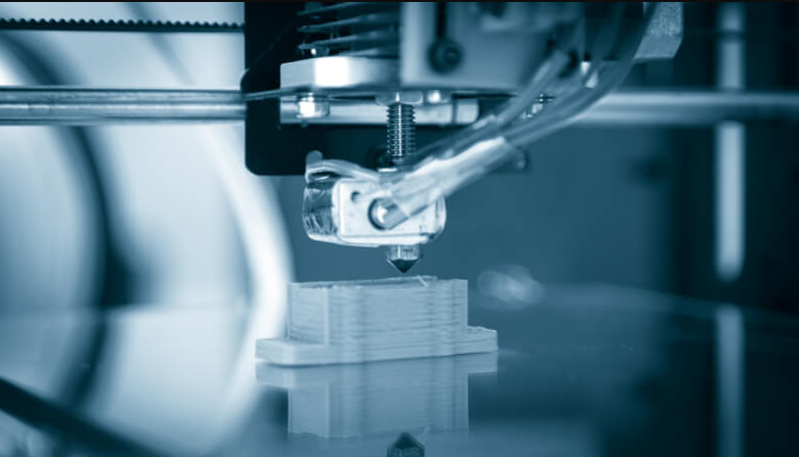CNC Machining and 3D Printing Compare - What's the Difference and Which is Better for Manufacturing
Choosing a right manufacturing technology will benefit a lot and lead your business forward more smoothly, the Computer Numeric Control (CNC) Machining and 3D Printing technologies emerged with the engineering and machinery advances, which one is better from them? There are varying factors behind the selection. Now, Dajinprecision.com introduces the difference between 3D Printing and CNC Machining, break down and compare each manufacturing style to choose the appropriate one for specific applications.
CNC Machining vs 3D Printing - What are CNC Machining and 3D Printing
CNC Machining or Computer Numeric Control Machining is a common subtractive manufacturing technology using a range of complex machines like grinders, lathes, drills, routers, plasma cutters, laser cutters and mills to remove extra components from original materials and create shaped precision CNC Machined Parts. CNC Machining covers CNC milling, CNC turning, CNC drilling and more services.

3D Printing technique appeared later than CNC, it's an additive manufacturing process usually successively adding material layer by layer and builds a three-dimensional object from a computer-aided design (CAD) model. 3D Printing includes Selective Laser Sintering, Stereolithography, and others.

Even though 3D Printing evolves to be more accessible and versatile, the CNC machining service and parts still have a strong foothold in modern manufacturing and can't be replaced by 3D Printing.
CNC Machining vs 3D Printing - The Difference Between 3D Printing and CNC Machining
3D Printing and CNC Machining have some similarities and differences. The main differences between them are material, size, speed, cost, production, scale, waste, and others.
Materials. CNC is predominately processed with metals, it can also machining plastics, thermoplastics, acrylics, softwoods, and hardwoods, modeling foams and wax. 3D Printing is mainly used with plastics and to a lesser extent for metals. Some technologies can produce parts from ceramics, wax, sand, and composites. 3D printers can't work with each material that traditional manufacturers use because the high melting points may deform the metal. And separate 3D printer for each material.
Common CNC Machining material - Plastics: ABS, Nylon, Polycarbonate, PEEK; Metals: Aluminum, Stainless Steel, Titanium, Brass, Alloy
Common 3D Printing material - Plastics: Nylon, PLA, ABS, ULTEM, ASA, TPU, Resins; Metals: Aluminum, Stainless Steel, Titanium
Speed. CNC has a faster production speed than 3D Printing. 3D Printing needs to build the final product layer by layer, automated CNC machines can constantly work in a long period of time as long as they are maintained properly. The workload of CNC in one hour is equivalent to that of 3D in several hours. 3D Printed products requires work after they were built as well, such as washed, polished and sealed.
Size. You can make a wide range of sizes through CNC machining, no matter the tiny parts or refrigerators, in 3D printing, there will be some limitations on the sizes, the parts should not larger than the printing bed, if you want to produce some large components, it needs to be broken into smaller parts that have appropriate dimensions to be printed separately.
Waste. CNC machining is a subtractive process and always ends up with a number of waste materials that are not recyclable, which makes the cleanup more difficult. While 3D printing only uses materials what the process needs, control the amount precisely, it will not produce much garbage and the cleanup is not necessary.
Quality. CNC machines can produce high precision parts with better tolerance than 3D printers, regardless of the material used. A good manufacturer can offer 0.001-inch accuracy products. The capabilities of Dajin Precision can reach ±0.002 tolerance or according to your custom requirements. 3D Printing is not able to accurate down to near CNC machines in practice, as no small part to the materials used.
Versatility. CNC is capable in tools, fixture and a vast range of custom parts, thousands of same parts or a one-off prototype for various industries are available through CNC. 3D printing is limited in terms of the materials, sizes, and types.
Benefits of CNC Machining over 3D Printing
Cost. The cost is one of the most important factors need to consider for choosing a manufacturing technique, CNC machining is usually cheaper and more cost-effective than 3D Printing.
Speed. We have talked about that, the CNC is a faster solution than 3D printing.
Difficulty. CNC machines are far easier to install and implement compare to industrial 3D printers. CNC machining makes prototyping easier as the machines can carve the design from the material and build prototypes out of the exact material that used to obtain the last product. But 3D printers don’t fabricate prototypes with the structural strength.
Quality: CNC can make high quality and precision machining parts while 3D printers can't match.
Product integrity. The finished product retains the materials strength and other properties after CNC machining, but 3D Printing reduces the integrity of the parts because it is layering, and the materials cannot bond at the molecular level.
Volume. CNC machining is more suitable for large-scale production than 3D printing based on speed and cost. There are some drawbacks in mass production of 3D printers, which have not yet been solved.
CNC machining is still the preferred manufacturing process for each industry, Dajin Precision is specializing CNC turning and turning-milling service in medical, aerospace, automobile, electronics, machinery, military, and other industries for over 10 years and provide custom precision machined parts and exceptional CNC machining solutions for clients. Please feel free to contact us if there are any needs.
